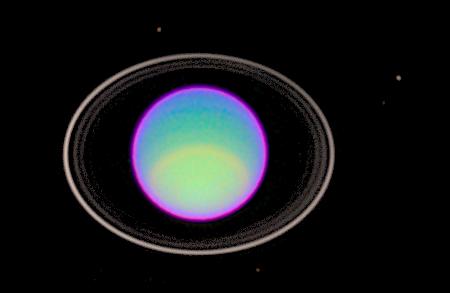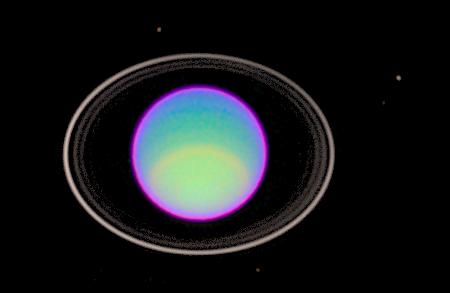Hubble Captures Detailed Image of Uranus’ Atmosphere

| Credit | NASA/JPL/STScI |
|---|---|
| PIA Number | PIA01280 |
| Language |
|
Hubble Space Telescope has peered deep into Uranus' atmosphere to see clear and hazy layers created by a mixture of gases. Using infrared filters, Hubble captured detailed features of three layers of Uranus' atmosphere.
Hubble's images are different from the ones taken by the Voyager 2 spacecraft, which flew by Uranus 10 years ago. Those images - not taken in infrared light - showed a greenish-blue disk with very little detail.
The infrared image allows astronomers to probe the structure of Uranus' atmosphere, which consists of mostly hydrogen with traces of methane. The red around the planet's edge represents a very thin haze at a high altitude. The haze is so thin that it can only be seen by looking at the edges of the disk, and is similar to looking at the edge of a soap bubble. The yellow near the bottom of Uranus is another hazy layer. The deepest layer, the blue near the top of Uranus, shows a clearer atmosphere.
Image processing has been used to brighten the rings around Uranus so that astronomers can study their structure. In reality, the rings are as dark as black lava or charcoal.
This false color picture was assembled from several exposures taken July 3, 1995 by the Wide Field Planetary Camera-2.
The Wide Field/Planetary Camera 2 was developed by the Jet Propulsion Laboratory and managed by the Goddard Space Flight Center for NASA's Office of Space Science.
This image and other images and data received from the Hubble Space Telescope are posted on the World Wide Web on the Space Telescope Science Institute home page at URL http://oposite.stsci.edu/.

